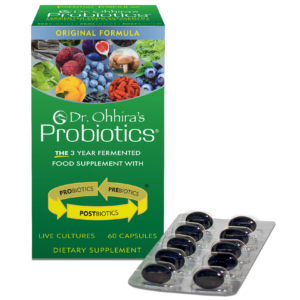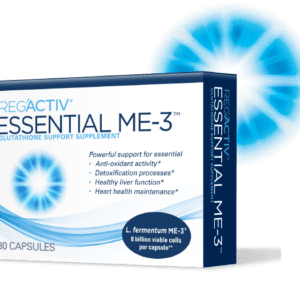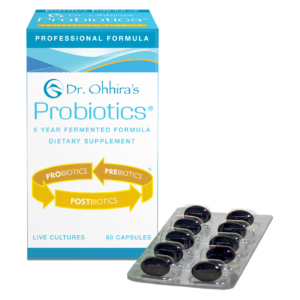Molds are a type of fungus that grow exceedingly well in damp, wet environments. They may grow underneath your bathroom sink or in your recently flooded basement. They love multiplying in stacks of wet newspapers or cardboard boxes, around air-conditioning units and leaky windows, and beneath refrigerators.
Mold is more than a pesky housecleaning problem. While not all types of molds are harmful, many are classified as toxic. Mold exposure can have real effects on your family’s health. Here’s what you need to know to protect your family and yourself from mold exposure symptoms.
What Are Mycotoxins?
Molds reproduce by forming spores, which are so small they are not visible to the naked eye. The spores produced by toxic molds contain highly hazardous compounds called mycotoxins.
The spores are so tiny and lightweight that they easily travel through the air. While exposure to mycotoxins can come from ingestion (eating) or topical (skin) absorption, the most common and dangerous form of exposure comes from inhalation or breathing the mold spores.
Mold May Appear in Food
While the black stuff that grows in your shower is quite apparent, and mold hiding in dark, moist places might emit an odor, there are other places where you might encounter dangerous mold. Food is one of them.
In some cases, symptoms appear quickly, but the effects are more long-term in others. Mycotoxins have been implicated in diseases such as cancer and immune deficiency.
What Mold Varieties Are Dangerous?
According to the World Health Organization, twelve of the hundreds of mold species are the most dangerous. Here are some toxins and the mold species that produce them.
Aflatoxins
This mycotoxin is one of the most poisonous. Aspergillus flavus and Aspergillus parasiticus produce it. It grows in decaying vegetation, hay, grains, oilseeds, spices, and tree nuts. In addition, animals who eat affected food can pass the toxin on to humans through their milk. Aflatoxins are known to cause acute, life-threatening poisoning, liver damage, and have caused DNA damage and cancer in animals.
Ochratoxin A
Several strains of Aspergillus and Penicillium produce this toxin. They appear in coffee, cereals, beans, grape juice, wine, spices, dry vine fruits, and licorice. Kidney damage is its most prevalent effect on humans, but it may also affect fetal development and the immune system.
Patulin
Aspergillus, Penicillium, and Byssochlamys mainly produce patulin. It occurs in moldy fruits, grains, rotting apples, and products. Humans may experience nausea, gastrointestinal upset, and vomiting. Animals may experience liver, spleen, and kidney damage, and immune system toxicity.
Fusarium Fungi
This microorganism generates toxins in cereal grains like wheat, oats, and corn. The toxins it creates are trichothecenes such as deoxynivalenol (DON), nivalenol (NIV), T-2 and HT-2 toxins, zearalenone (ZEN), and fumonisins. These toxins can quickly cause skin and intestinal mucosa irritation in humans, causing diarrhea and potentially esophageal cancer. In animals, it suppresses the immune system and can cause kidney toxicity.
How Does the Body React to Mold Exposure?
We have natural defense mechanisms that prevent many inhaled substances from entering our lungs, such as coughing, sneezing, nasal mucous, and hairs that act as filters. However, mold spores are so tiny they can sometimes bypass our defenses and enter the lungs.
In addition to their small size, mold spores can overwhelm our defenses by the sheer magnitude of their numbers. They measure 1 to 20 microns in size, and approximately 250,000 spores can fit on the head of a pin. People often inhale more than 500,000 spores per minute in a moldy environment.
What if Mold Enters Your Body?
Once mold spores and their mycotoxins enter the lungs and pass into systemic circulation, they can cause inflammatory responses that make the body display mycotoxin symptoms. Mold toxicity is often misdiagnosed because mold exposure symptoms can mimic so many other illnesses.
Mycotoxin illness can even increase your risk of developing cancer. Potent toxins called aflatoxins are associated with mold exposure, as they can occur in water-damaged buildings where mold loves to grow. The International Agency for Research on Cancer (IARC), the specialized World Health Organization (WHO) cancer agency, has classified aflatoxins as a Category 1 carcinogen.
Who Is Most Vulnerable to Mold Exposure?
As with most conditions, those with a weakened immune system are more susceptible to mold exposure than those without. However, other conditions can also make people more likely to be affected by mold exposure.
- Breathing issues such as allergies or asthma
- Cancer patients
- HIV patients
- Transplant recipients
- Those taking immune suppression medications
- Children
- Elderly people
Steps to Prevent Mold in Your Home and Business
Mold loves to grow in damp, dark places. Prevent growth by cleaning up any wet papers, carpet, wallboard, or other items within 24-48 hours of the moisture appearing. These actions are critical if you have a leak or are affected by a natural disaster involving flooding. Open windows and doors and dry out the building with fans.
If mold has already taken hold, it might be best to work with a professional to clean it up. If you decide to clean it up yourself, wear a good-quality mask and follow the EPA’s guidelines.
How Glutathione Impacts Mold Exposure
Mold exposure and mycotoxin illness create intense inflammation and free radical oxidative stress. Glutathione, a naturally occurring antioxidant in plants, animals, and humans, helps rid the body of mold toxicity.
It’s so powerful that glutathione is often called the “mother of all antioxidants” or the “master antioxidant.” However, the body is not always able to produce enough glutathione to combat its mold exposure symptoms.
Mycotoxins Deplete Glutathione
Here’s a more in-depth look at how glutathione interacts with mycotoxins. At low doses, the body detoxifies mycotoxins such as aflatoxin by binding the toxin to glutathione, which then gets excreted. However, at higher levels of exposure, glutathione levels are depleted.
When this happens, the mycotoxins exert their toxic effects by damaging cells throughout the body, especially nerves, lungs, kidneys, and the liver. Hence, mycotoxins are classified as neurotoxins (nerves), hepatotoxins (liver), nephrotoxins (kidneys), and immunotoxins (immune system). Mycotoxins are toxic to every tissue and organ system in the body.
To combat these risks, many people who dealing with mycotoxin exposure choose to take natural glutathione supplements to further aid their body’s natural defenses.
Boost Your Glutathione Levels with the Best Supplements for Mold Exposure
Researchers have devised many ways to protect the body from mold exposure and mycotoxin illness. These include wearing masks, using HEPA filters, and boosting glutathione intravenously or through a nebulizer (a drug delivery device that delivers medication through a mist you inhale). But by far, the easiest way to boost glutathione levels is by taking an oral supplement.
The Bacteria Good Guys
In 1995, scientists identified a unique strain of probiotic bacteria named Lactobacillus fermentum ME-3 (often referred to as ME-3) that synthesizes glutathione. In a human clinical trial, individuals taking ME-3 gained a remarkable 49% increase in their reduced-to-oxidized glutathione ratio.
Since then, products containing Lactobacillus fermentum ME-3 have garnered worldwide recognition as a rapid, efficient way to reliably boost glutathione levels. Glutathione supplements like Reg’Activ products support glutathione levels as part of an overall program to address some of the concerns with exposure to mold and other environmental challenges.
- https://www.who.int/news-room/fact-sheets/detail/mycotoxins
- https://essentialformulas.com/importance-of-glutathione/
- https://essentialformulas.com/product/regactiv-essential-me-3/
- https://essentialformulas.com/12-probiotic-strains/
-
 Dr. Ohhira’s® Probiotic Supplements$13.95 – $89.95
Dr. Ohhira’s® Probiotic Supplements$13.95 – $89.95 -
 Reg´Activ® Essential ME-3$39.95
Reg´Activ® Essential ME-3$39.95 -
 Dr. Ohhira’s® Probiotics Professional Formula$39.95 – $129.65
Dr. Ohhira’s® Probiotics Professional Formula$39.95 – $129.65






